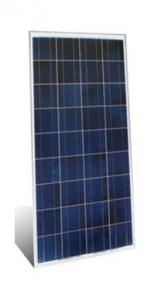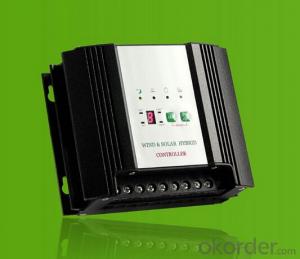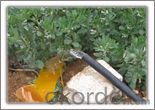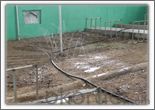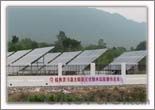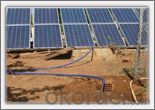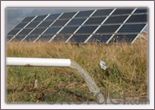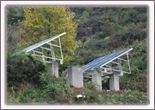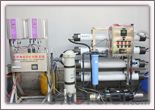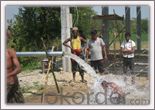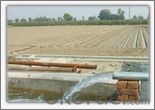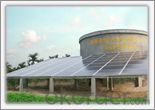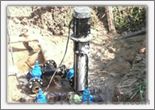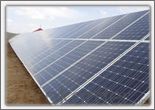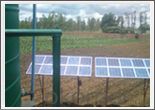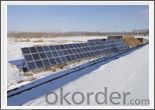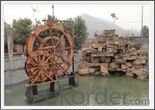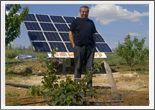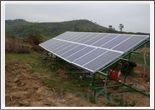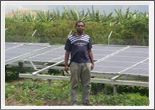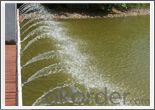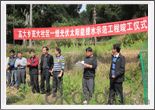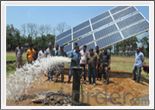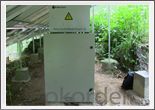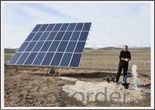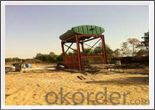PF Solar Pumping Inverter Water Pump Inverter
- Loading Port:
- Shekou
- Payment Terms:
- TT OR LC
- Min Order Qty:
- 20 set
- Supply Capability:
- 500000 set/month
OKorder Service Pledge
OKorder Financial Service
You Might Also Like
Solar Inverter Introduction:
Solar pumping inverter converts DC current from the solar array into AC current to drive the pump. With the function of MPPT (maximum power point tracking), it regulates the output frequency according to irradiation in real time to achieve the maximum power.
Solar Inverters Features:
1. Adopting the proposed dynamic VI maximum power point tracking (MPPT) control method; Fast response and stable operation; Better than the conventional methods which may lead to the problems including poor tracking performances, unstable or even cause water hammer damaging when the irradiation on the array changes rapidly.
2. The solar pumping inverters system is dispensed with energy storing devices, and stores water instead of electricity. It improves the reliability of the device, at the same time, it lowers the construction and maintenance costs of the system dramatically.
3. Digital control; automatic operation and data acquisition/storage of 8 years, etc; 98% of conversion efficiency, and complete protection.
4. In-line blocks; user friendly; convenient for operating; perfect cooling and shielding.
Solar Pumping Inverter Advantages:
1. To drive pumps equipped with 3-phase induction motors.
2. Optimized SPWM.
3. Various operation modes and MPPT algorithms are available.
4. Adjustable speed range of pump based on the actual situation of the system.
5. Available option of water-level detecting and control circuit.
6. Protection functions: lightning, over/low input voltage, over current and over load protection, etc.
7. Enclosure class: IP52.
8. Ambient temperature:-10~+50˚C.
Success Stories
►Middle East ►NaQu ►GuiLin
►Turkey ►XiNing ►YunNan
►Army stationed island ►Bangladesh ►Pakistan
►HaiNan ►HuBei ►Uganda
►XinJiang ►NingXia ►Afghan
►Zimbabwe ►Inner Mongolia ►Zhejiang
►Guangxi Guilin ►Turkey2 ►Botswana
►Naning ►Uganda ►Shaanxi
►Tsinghua University ►Pakistan ►Yunnan2
►FuJian ►Banqladesh ►YunNan3
►Turkey ►Inner Mongolia ►Senegal
- Q:What is the maximum load current of a solar controller?
- The maximum load current of a solar controller depends on the specific model and its specifications. It can vary widely, ranging from a few amps to several hundred amps, depending on the size and capacity of the solar controller.
- Q:What are the main components of a solar controller?
- The main components of a solar controller include a charge controller, a battery monitor, and a temperature sensor. The charge controller is responsible for regulating the voltage and current from the solar panels to ensure that the batteries are charged efficiently and safely. It prevents overcharging and over-discharging of the batteries, which can damage them and reduce their lifespan. Modern charge controllers often incorporate maximum power point tracking (MPPT) technology, which optimizes the power output from the solar panels by continuously adjusting the voltage and current to match the batteries' needs. The battery monitor is used to measure and display the state of charge (SOC) and voltage of the batteries. This information is crucial for the user to know the remaining capacity of the batteries and to estimate how long they can power their devices or systems. Some advanced battery monitors also provide additional data such as the battery temperature, which helps in managing the charging process more effectively. The temperature sensor is used to monitor the temperature of the batteries. High temperatures can negatively impact the performance and lifespan of the batteries. The temperature sensor allows the solar controller to adjust the charging parameters based on the battery temperature, ensuring that the batteries are charged optimally and protected from excessive heat. In addition to these main components, some solar controllers may also include features such as LCD displays for easy monitoring, USB ports for charging small electronic devices, and communication ports for data logging or remote monitoring. The components and features of a solar controller can vary depending on the specific model and manufacturer, but the charge controller, battery monitor, and temperature sensor are the fundamental components that ensure the efficient and safe operation of solar systems.
- Q:Are solar controllers necessary for small solar panel systems?
- Small solar panel systems require solar controllers. These controllers, also known as charge controllers or regulators, are vital components in any solar power system. They have the main responsibility of regulating and controlling the power that flows from the solar panels to the battery or grid. Solar controllers play a crucial role in protecting the battery from overcharging or discharging in small solar panel systems. They prevent the battery from being overcharged during sunny periods, which can harm and reduce its lifespan. Similarly, they also prevent excessive discharging during low sunlight or at night, which can cause damage as well. Additionally, solar controllers optimize the charging process by maximizing the efficiency of the solar panels. They employ techniques like pulse width modulation (PWM) or maximum power point tracking (MPPT) to ensure that the solar panels are always operating at their peak power output. This allows for the capturing of the maximum amount of energy from the sun and more effective battery charging. Furthermore, solar controllers often come with extra features such as temperature compensation, load control, and digital displays to provide information on the system's performance. These features are particularly beneficial for small solar panel systems where monitoring and control are important. In conclusion, although solar controllers may increase the cost of the system, the advantages they bring far outweigh the expense. They are indispensable components for small solar panel systems as they ensure efficient and safe operation, extend the battery's lifespan, and maximize the performance of the solar panels.
- Q:Can a solar controller be used with a solar-powered remote cabin or cottage?
- Yes, a solar controller can be used with a solar-powered remote cabin or cottage. A solar controller regulates the flow of electricity from the solar panels to the batteries, preventing overcharging and ensuring the batteries are charged efficiently. It is an essential component for managing and optimizing the solar power system in a remote cabin or cottage.
- Q:What is the role of a solar controller in preventing battery overcharging?
- The role of a solar controller in preventing battery overcharging is to regulate the flow of electricity from the solar panels to the battery bank. Solar panels generate electricity when exposed to sunlight, and this energy needs to be managed properly to avoid overcharging the batteries. A solar controller, also known as a charge controller, acts as an intermediary between the solar panels and the batteries. It monitors the voltage and current levels coming from the solar panels and adjusts them according to the state of charge of the batteries. When the batteries are fully charged, the solar controller will limit or completely cut off the flow of electricity from the panels to prevent overcharging. Overcharging a battery can lead to various issues such as reduced battery life, increased maintenance requirements, and even safety hazards like explosion or fire. By preventing overcharging, the solar controller helps to extend the lifespan of the batteries and ensures their efficient and safe operation. Additionally, a solar controller may incorporate other features such as temperature compensation, which adjusts the charging voltage based on the battery temperature. This further enhances the performance and longevity of the batteries. In summary, the primary role of a solar controller in preventing battery overcharging is to regulate the flow of electricity from the solar panels to the batteries, ensuring that the batteries are charged optimally and safely.
- Q:Can a solar controller handle power surges from the generator?
- No, a solar controller is not designed to handle power surges from a generator.
- Q:Can a solar controller be used with a solar-powered telecommunications system?
- Yes, a solar controller can be used with a solar-powered telecommunications system. A solar controller helps regulate and optimize the charging of batteries connected to the solar panels, ensuring proper voltage and preventing overcharging or damage to the batteries. This is especially important in a telecommunications system where a consistent and reliable power supply is crucial.
- Q:Can a solar controller be used with a solar-powered recreational facility?
- Yes, a solar controller can be used with a solar-powered recreational facility. A solar controller regulates the flow of electricity from the solar panels to the battery bank, ensuring efficient charging and preventing overcharging or damage to the batteries. It is an essential component in managing the power supply for a solar-powered facility, including recreational facilities such as campsites, sports complexes, or outdoor activity centers.
- Q:Can a solar controller be used with a solar-powered backup generator?
- Yes, a solar controller can be used with a solar-powered backup generator. The solar controller helps regulate and control the flow of electricity from the solar panels to the generator's batteries, ensuring optimal charging and preventing overcharging.
- Q:Can a solar controller be used with a solar-powered boat?
- Yes, a solar controller can be used with a solar-powered boat. A solar controller helps regulate the voltage and current from the solar panels, ensuring efficient charging of the boat's batteries. It also protects the batteries from overcharging or damage. Therefore, using a solar controller is essential for the proper functioning and maintenance of a solar-powered boat.
1. Manufacturer Overview |
|
|---|---|
| Location | |
| Year Established | |
| Annual Output Value | |
| Main Markets | |
| Company Certifications | |
2. Manufacturer Certificates |
|
|---|---|
| a) Certification Name | |
| Range | |
| Reference | |
| Validity Period | |
3. Manufacturer Capability |
|
|---|---|
| a)Trade Capacity | |
| Nearest Port | |
| Export Percentage | |
| No.of Employees in Trade Department | |
| Language Spoken: | |
| b)Factory Information | |
| Factory Size: | |
| No. of Production Lines | |
| Contract Manufacturing | |
| Product Price Range | |
Send your message to us
PF Solar Pumping Inverter Water Pump Inverter
- Loading Port:
- Shekou
- Payment Terms:
- TT OR LC
- Min Order Qty:
- 20 set
- Supply Capability:
- 500000 set/month
OKorder Service Pledge
OKorder Financial Service
Similar products
New products
Hot products
Hot Searches
Related keywords






